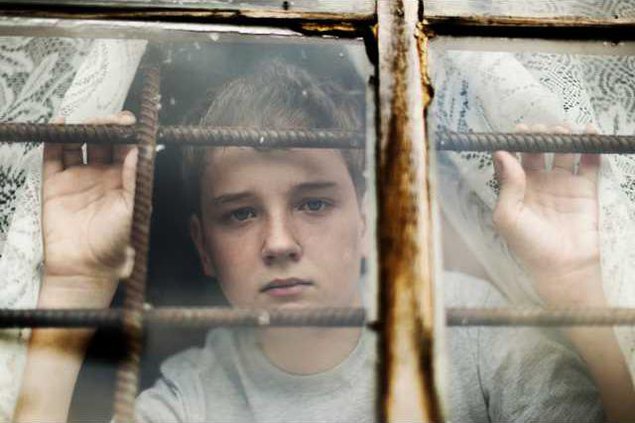The number of Americans living in poverty has dropped year-over-year for the first time since 2006, and childhood poverty dropped for the first time in 13 years, according to new figures released Monday by the United States Census Bureau.
About 45 million Americans, or 14.5 percent of the population, lived below the poverty line in 2013, down from 15 percent in 2012. Children under the age of 18 living in poverty dropped from 21.8 percent to 19.9 percent.
The drop is heartening news that the post-recession rebound is finally starting to reach some poor families, says Dr. Caroline Fichtenberg, director of research at Children’s Defense Fund. But Fichtenberg says there are still far too many poor children in America.
"On one hand it's great news, and 2.5 million fewer poor children is important, but it's still much higher than we were before the recession," says Fichtenberg. "Poor children benefit last from the recovery."
Kids benefit last
Children tend to outnumber adults in families, which makes the poverty numbers for kids higher, but the big picture is more complicated, says Fichtenberg.
One reason that children are the poorest age group in the U.S. is that more than two-thirds of poor children are in single-parent families. Another is that America ranks last among developed nations in child poverty rates, according to a UNICEF study last year. The only country worse was Romania. Southern European countries most effected by the euro crisis, and with weaker economies than the U.S., had some of the worst rates, according to the study, but not as low as the U.S.
"There's no reason, except for policy, that we have such high poverty in children," says Fichtenberg.
Federal funds help
Federal investments do relieve child poverty. SNAP, or food stamps, lifted 1.6 million children out of poverty in 2012, and the Earned Income Tax Credit (EITC) lifted 2.9 million children out of poverty, according to Census Bureau data and Center of Budget and Policy reports.
Still, a comparison of poverty between children and senior citizens (senior citizens make up 9.5 percent of the poor, half the rate of children), indicates that more could be done for kids, says First Focus, a bipartisan child and family advocacy group.
"The federal government makes much more substantial investments in reducing poverty among the elderly than in reducing child poverty," the group said in a statement, citing programs like Social Security, Medicare and tax subsidies for employer-sponsored retirement plans.
These initiatives are not subject to annual political processes and whims the same way that food stamps are, for example. Congress made cuts to SNAP in November of last year, which reduced SNAP benefits to an average of less than $1.40 per person per meal in 2014. Improvements to the EITC will expire in 2017.
The British government enacted a "national child poverty reduction strategy" that has since reduced child poverty in Britain, while the U.S.'s has continued to rise. The program includes a more seamless system that makes it easier to apply for and keep benefits as families move from joblessness into jobs, drug recovery support, and other family friendly measures.
A poll by the advocacy group First Focus in 2012 showed bipartisan support among voters to reduce child poverty — 82 percent of voters (89 percent of Democrats, 81 percent of independents, and 76 percent of Republicans) want Congress and the White House to deliver a plan to cut child poverty in half within 10 years.
“America has succeeded in protecting seniors from poverty because Congress decided that was important. Britain has shown us it is possible to protect children, too," said First Focus President Bruce Lesley.
High cost of poverty
Experts point out that the price of poverty has an economic cost for the whole country — poor kids tend to struggle to perform as well in school, are less likely to graduate from college, and are much more likely to be poor as adults and raise poor children. This is significant considering that 20 percent of America's youths are being raised in families at or below the poverty line.
Research shows that the strain of poverty can slow brain development — such as a study from Martha Farah of the University of Pennsylvania who has scanned the brain activity of hundreds of kids, both rich and poor. Extreme poverty slowed development of the hippocampus, which helps with memory, learning and stress regulation, and the prefrontal cortex, which coordinates memory and motor control.
"Wealthy kids tend to get more stimulation," Farah said. "They get read to more, talked to more, get to visit interesting places — we know that promotes cognitive brain development."
A 25-year study from the Institute on Drug Abuse found that poverty might contribute more to developmental delays and suppressed IQ than in-utero cocaine exposure, and other significant studies show that children that are well-fed, nurtured and educated during the first four years of life are not only more likely to graduate from college, but according to University of Chicago research, are less likely to suffer high blood pressure and obesity as adults.
"When we see these numbers, we don't realize what it means for a child. It's not something that's just impacting them now, it has dramatic consequences throughout life," says Frichtenberg.
"Children have only one childhood. It's a crucial period of time — and if we wait to figure this out in four or five years, we have missed a window that has already set a course for a child's life."
Email: laneanderson@deseretnews.com
Child poverty just dropped for the first time since 2000





